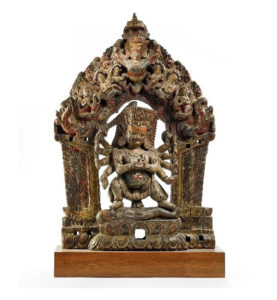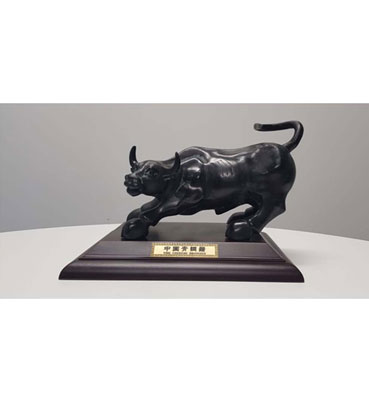01 Nov

Project Description
 Description: Wood, Height 90 cm
Description: Wood, Height 90 cmCatalogue note: He is shown standing in pratyalidhasana, trampling a body lying on a lotiform base, his ten arms holding various attributes or performing mudras. He is adorned with numerous jewels and a garland of heads, his face threatening, his forehead girded with a diadem, his hair made of flames. The niche is decorated with two makara and surmounted by Garuda flanked by six serpents, traces of polychromy; wear. This imposing wood shrine shows the most popular angry manifestation of Shiva in Nepal, namely Bhairava or the master of demons. He is the counterpart of the Buddhist Mahakala. Ferociously, he is trampling here on a demonic figure lying on the lotus base. His ten hands hold various attributes. The wrathful face displays bulging eyes below bushy eyebrows while his open mouth is showing teeth and fangs. His flaming hair is secured with a diadem sculpted with skulls. Traces of puja on his face enhance the overwhelming powerful expression of the presented Bhairava figure.The shrine itself consists of a base supporting a pair of columns topped by an elaborate arch or torana. At its either end is placed a makara with curling trunk surmounted by various nagarajas. The apex is deeply sculpted with the Garuda bird. The lotus base sees a hole for insertion of the libation pipe so that alcohol can be poured forth for the worshippers to imbibe as a form of consecrated offerings (prasad). The other holes once held smaller figures perhaps including its donors.Another though slightly smaller wood Bhairava shrine is presently in the Los Angeles County Museum and published by P. Pal in Art of Nepal, University of California Press, Berkeley, Los Angeles, and London 1985, page 130.
Provenance: Acquired from Christie’s, Sale 17457, Lot 232, Invoice no. DB19003294. Acquired by the father of the present owner from Baharany, New Delhi, in 1973.
Catalogue no.: 2019A0253




